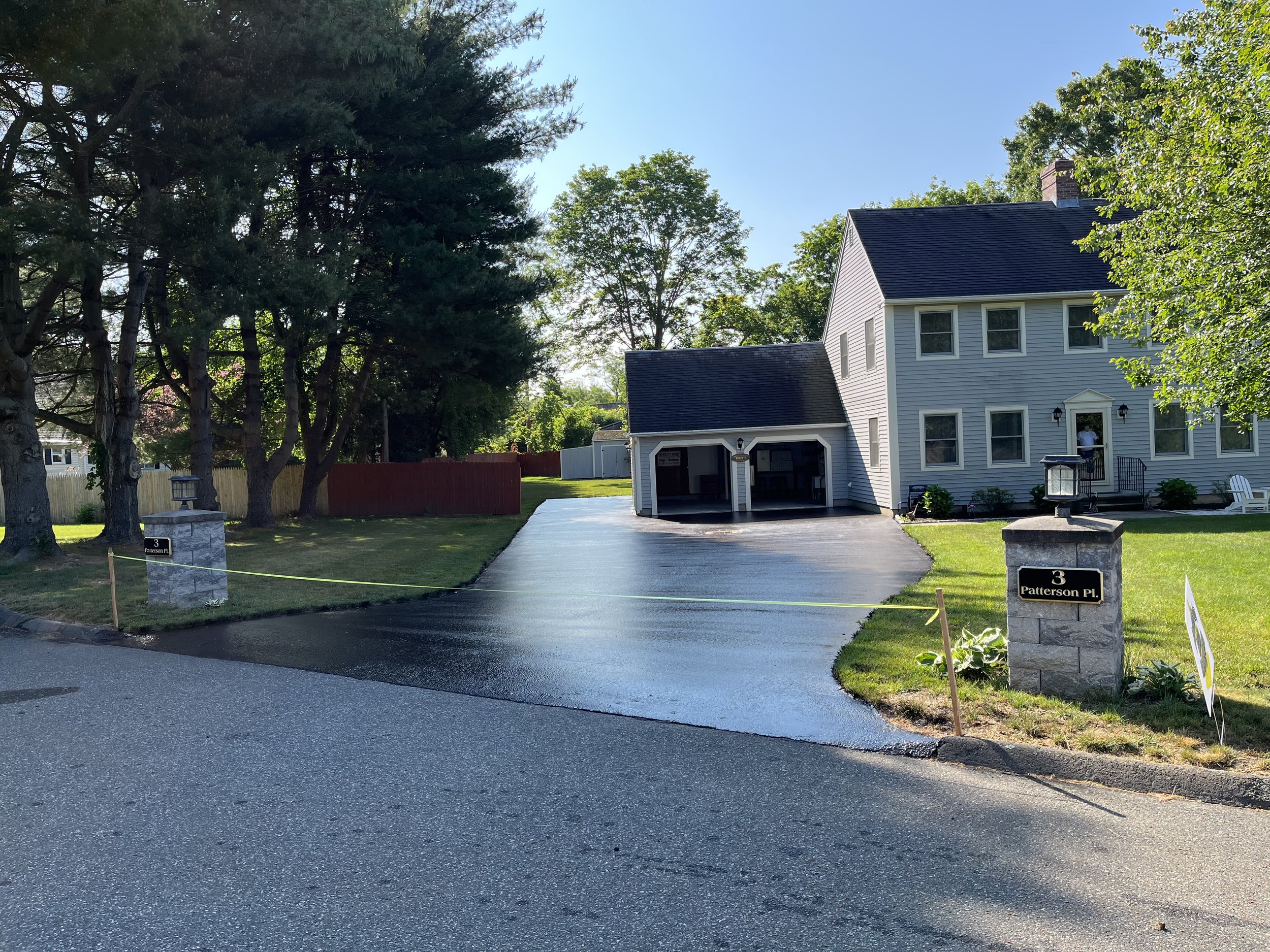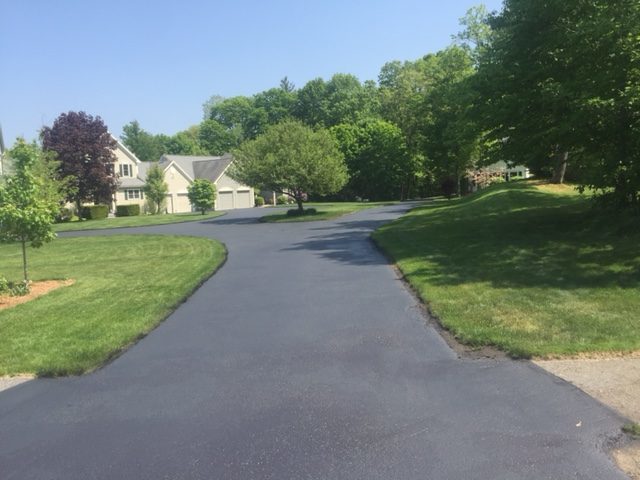Change Your Residential property's Aesthetics: Commercial Parking Lot Paving and Asphalt Sealing Solutions
Change Your Residential property's Aesthetics: Commercial Parking Lot Paving and Asphalt Sealing Solutions
Blog Article
Warm Mix Asphalt: A Lasting Remedy for Sidewalk
Warm Mix Asphalt (HMA) has actually emerged as a leading lasting choice for sidewalk remedies, offering a myriad of innovative technologies and environmental benefits. As the need for environment-friendly construction methods grows, exploring the nuances of HMA's sustainability can provide valuable insights right into the future of pavement options.
Environmental Advantages of Hot Mix Asphalt

Moreover, Hot Mix Asphalt assists to minimize urban warm island results. Its dark color takes in sunshine, minimizing the amount of warmth showed back right into the atmosphere contrasted to lighter-colored pavements. This can lower ambient temperature levels in city areas, reducing the need for a/c and eventually minimizing power consumption.
In addition, Hot Mix Asphalt adds to boosted stormwater management. Its permeable nature enables water to charge and penetrate the sidewalk groundwater materials, reducing runoff and the risk of flooding. These environmental benefits make Warm Mix Asphalt a lasting option for paving roads and freeways.
Power Effectiveness in HMA Production
Is power effectiveness an essential variable in the manufacturing of Warm Mix Asphalt (HMA)? Absolutely. Power plays a substantial role in the production of HMA, influencing both price and ecological sustainability. One key element of power performance in HMA manufacturing is the usage of cozy mix asphalt (WMA) innovations (commercial parking lot paving). WMA permits the mixing and positioning of asphalt at reduced temperatures compared to standard hot mix asphalt, resulting in lowered energy intake during production. This procedure not just reduces gas usage but also decreases greenhouse gas exhausts, making it a more ecologically pleasant alternative.
Moreover, advancements in plant technologies have actually led to more energy-efficient HMA production processes. By enhancing power usage in HMA manufacturing, the sector can decrease its carbon footprint while keeping high-quality pavement materials.
Recyclability of Warm Mix Asphalt
The recyclability of Warm Mix Asphalt (HMA) is an essential facet of its sustainability and long-lasting environmental influence. HMA is just one of the most recycled materials in the USA, with over 100 million heaps of recovered asphalt pavement (RAP) being recycled yearly in new pavement building. Reusing HMA supplies numerous ecological benefits, such as lowering the requirement for virgin products, lowering energy intake during manufacturing, and lowering the quantity of waste sent out to landfills.
The procedure of reusing HMA entails crushing the existing pavement, squashing it into smaller sized items, and mixing it with brand-new accumulation and asphalt binder to produce a recycled mix. In general, the recyclability of HMA plays a significant function in advertising sustainable practices within the sidewalk sector.

Long-Term Performance of HMA
Asphalt pavements demonstrate toughness and durability over an extended period, showing the lasting efficiency of Hot Mix Asphalt (HMA) The durability of HMA can be credited to its ability to stand up to rush hour tons, extreme weather condition problems, and the impacts of aging. Researches have actually revealed that well-designed and click here to find out more correctly created HMA pavements can last for twenty years or even more with regular upkeep. The key to making the most of the long-term efficiency of HMA lies in utilizing high-quality products, complying with ideal techniques in construction, and executing efficient maintenance methods. Appropriate water drainage, regular examinations, and prompt repair services are important for maintaining the structural honesty of HMA sidewalks with time. In addition, innovations in HMA innovation, such as the usage of polymer-modified binders and warm mix asphalt, have actually better boosted the longevity and long life of HMA sidewalks. By prioritizing top quality building and construction and maintenance practices, HMA proceeds to verify itself as a sustainable and economical solution for lasting sidewalk framework.

HMA: Toughness and Sustainability
Showing both durability and sustainability, Hot Mix Asphalt (HMA) has become a foundation in the building and imp source construction of durable sidewalk frameworks - commercial parking lot paving. HMA's durability stems from its capability to hold up against hefty lots, harsh weather, and high web traffic quantities, making it a trusted option for highways, highways, and flight terminal runways. The composition of HMA, which usually consists of aggregates, binder, and filler, plays an important function in enhancing its longevity and resistance to deterioration
Additionally, HMA's sustainability lies in its recyclability and energy-efficient production procedure. The capacity to reuse recovered asphalt pavement (RAP) in new HMA combinations lowers the need for virgin materials and reduces the environmental effect of pavement construction and upkeep. Additionally, the power performance of generating HMA lies in its lower mixing temperature levels compared to other sidewalk products, bring about minimized power usage and greenhouse gas emissions.
Conclusion
In verdict, hot mix asphalt (HMA) uses a sustainable option for sidewalk with its eco friendly qualities. HMA's recyclability, power efficiency in production, and lasting resilience make it a i was reading this green choice for roadway building.
HMA is one of the most recycled materials in the United States, with over 100 million tons of redeemed asphalt pavement (RAP) being recycled each year in new pavement construction.The procedure of reusing HMA involves grating the existing sidewalk, crushing it right into smaller items, and mixing it with brand-new aggregate and asphalt binder to produce a recycled mix.Asphalt sidewalks demonstrate sturdiness and strength over an extended duration, mirroring the long-term performance of Hot Mix Asphalt (HMA) In addition, advancements in HMA innovation, such as the usage of polymer-modified binders and cozy mix asphalt, have even more improved the toughness and longevity of HMA pavements. The ability to reuse recovered asphalt sidewalk (RAP) in new HMA blends reduces the need for virgin materials and lessens the ecological effect of sidewalk building and construction and maintenance.
Report this page